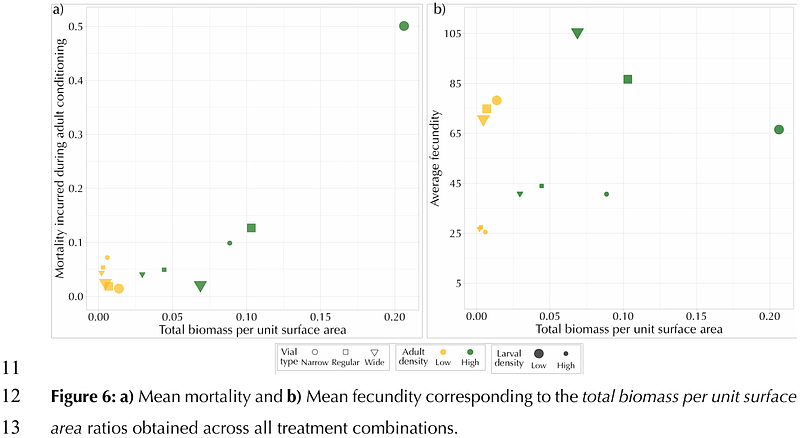Fitness effects of adult crowding in Drosophila: more than just overall density

Fitness effects of adult crowding in Drosophila: more than just overall density
Rao, M.; Temura, C.; Bindya, R. S.; Joshi, A.
AbstractDensity-dependent selection has been widely studied in D. melanogaster in the context of larval crowding, revealing its impact on several life-history traits. However, the effects of adult crowding in Drosophila have not been studied in similar detail. Earlier studies on adult crowding have primarily used large flies (reared at low larval density). These gave rise to the notion that adult crowding negatively affects key fitness components such as mortality and fecundity. Earlier work from our lab showed that body size significantly alters how flies respond to a relatively short period of adult crowding. Large flies show increased mortality and decreased fecundity with increased adult density. In contrast, small flies (reared at high larval density) tolerate adult crowding better, showing increased fecundity with increased adult density. Here, we extend this line of work by investigating how air volume in a culture vial can influence the effects of adult crowding. We manipulated air volume by altering the vial diameter (thereby also the food surface area), or the height of the air column. Flies of different body sizes were generated by rearing them at low or high larval densities. We find that the surface area of food available to the adults plays a greater role in shaping the outcome of adult crowding than the height of the air column. Large flies displayed context-dependent responses to adult crowding that were driven by the surface area of food provided. Small flies consistently responded positively to adult crowding in all conditions, with low mortality and increased fecundity at high adult density. Our findings highlight the importance of considering the body size, absolute density and the food surface area available to the flies and their nuanced interactions while exploring the effects of adult crowding, and thus paves the way for a detailed examination of other factors that impact adult crowding in addition to just the overall density.